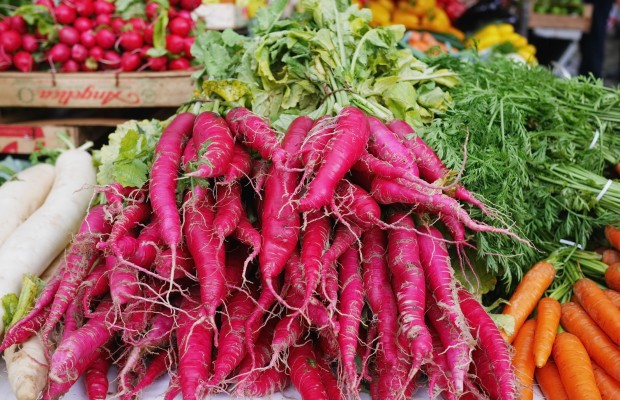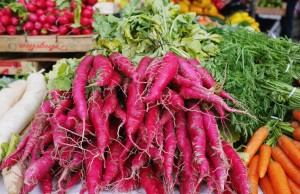Vegetables are the New Steak

The era of the meaty burger and charred rib eye is waning. Chefs at gastropubs and haute cuisine restaurants alike are turning to vegetables to create their signature dishes. And diners don’t have to be told to eat their veggies – they’re loving them.
These aren’t vegan restaurants, or even vegetarian enclaves dishing up the heirloom carrots and baby broccoli. These are restaurants such as celebrity chef Roy Choi’s Commissary in Los Angeles’ Koreatown, or José Andrés’ hip Washington D.C. enclave, Jaleo. These are signature dishes, not throwaway sides.
At the trendy Workshop Kitchen and Bar in Palm Springs, Calif., dishes like mushroom salad, or shaved Brussel sprout salad with persimmon, pomegranate, and hazel nuts are truly popular. And this isn’t an anomaly. It’s the rare fashionable dining spot these days that doesn’t feature some version of heirloom carrots. At Choi’s Commissary, the carrots are roasted until they are deliciously charred, served with a tart yogurt, zesty green sauce, and crisp radish sprouts.
Meanwhile, Jose Andres is planning a chain of fast-casual vegetable restaurants called Beefsteak – after the tomato, not an actual steak. At Philadelphia’s Vedge, chef Richard Landau eschews the word vegan while preparing vegetable dishes that are roasted, blackened, fried, and baked. Sauces, dips, and seasonings enliven and elevate veggie dishes in terms of flavor and creativity.
Everywhere you look, vegetables are popping up in fertile dining soil. Restaurants of all types tout veggie-centric or vegetable-focused menus. From beets to sorrel, vegetables are the next big food trend. It’s no longer just farm to table, it’s seed to table. Some chefs envision future menus in which animal proteins are the side dishes, with vegetables taking center stage.
That vegetables can be delicious and inventively prepared has been repeatedly proven, but the question remains, why have vegetables come of age now? One reason is an interest by the chefs themselves to live healthier lifestyles: lose weight, lower blood pressure and the like. Their own personal self-improvement has led them to create delicious vegetable creations, which they are passionate about sharing with others. A second reason: price. While meat costs sky-rocket, even the most expensive sweet purple heirloom carrot costs far less than a slab of Angus beef. It’s easier to keep kitchen costs down, encourage more frequent dining-out, and provide a great dining atmosphere than it is to overspend on meat and pass that cost on to the diner. Third, smart cooks are able to create completely unique vegetable dishes. They can make their mark in a fresh arena. Coq au vin was done to death long ago; dishes like pumpkin salad, smoked mushrooms, or grilled fennel lead down a completely different, and interesting, road. Fourth, vegetable-centered cooking is not just creative, relatively cost efficient, and healthy for diners, it’s also healthy for the planet. According to a study by the Livestock, Environment, and Development Initiative, a consortium of private and government agencies, livestock production is responsible for 18% of all global greenhouse gas emissions including a whopping 37% of methane gas emissions around the globe.
While some diners need convincing that vegetables can be thrilling and bacon is not the ultimate edible, more are embracing a healthy, vegetable-focused cuisine wherever they dine – at restaurants serving elegant Italian-influenced meals and over craft beers at communal pub tables. Earlier generations may have considered vegetables undesirable, but today’s young, hip, and culinarily aware diners are eager to experience the new flavor combinations vegetable dishes can provide. Salsify and rutabaga? Artichokes and watermelon raddish? These are strong, interesting tastes that haven’t been experienced over and over for the last twenty years. Trend-maker chefs lead lead diners to discover new dishes and preparations, explore new flavors, combine unexpected ingredients, and season dramatically
Ultimately, food is a culture and it’s evolving from steak and pomme frites to legumes, farro, and chives. Chefs nationwide are proving that going veg is a way to be creative, playful, and successful. It’s a delicious trend that’s here to stay.

















